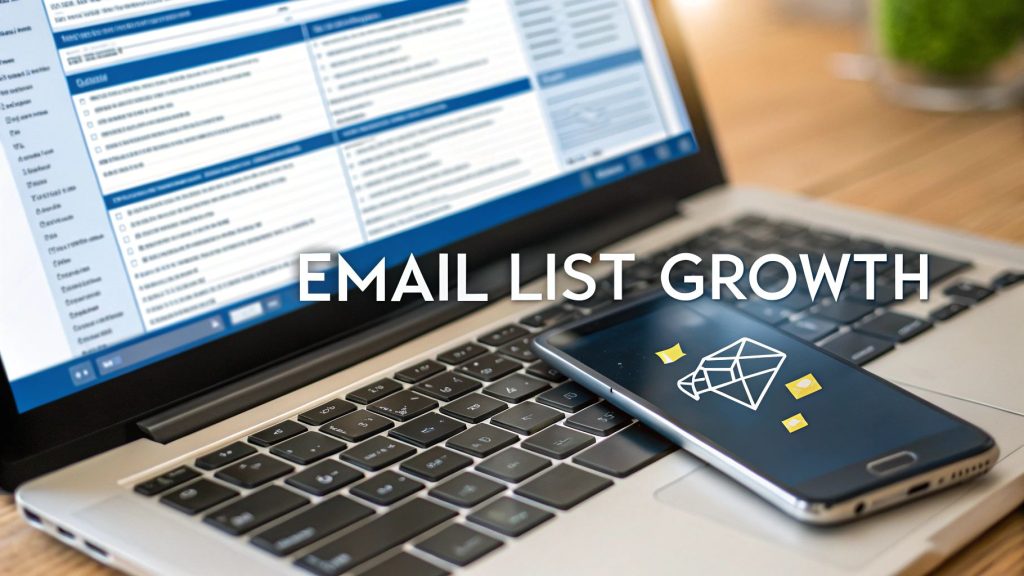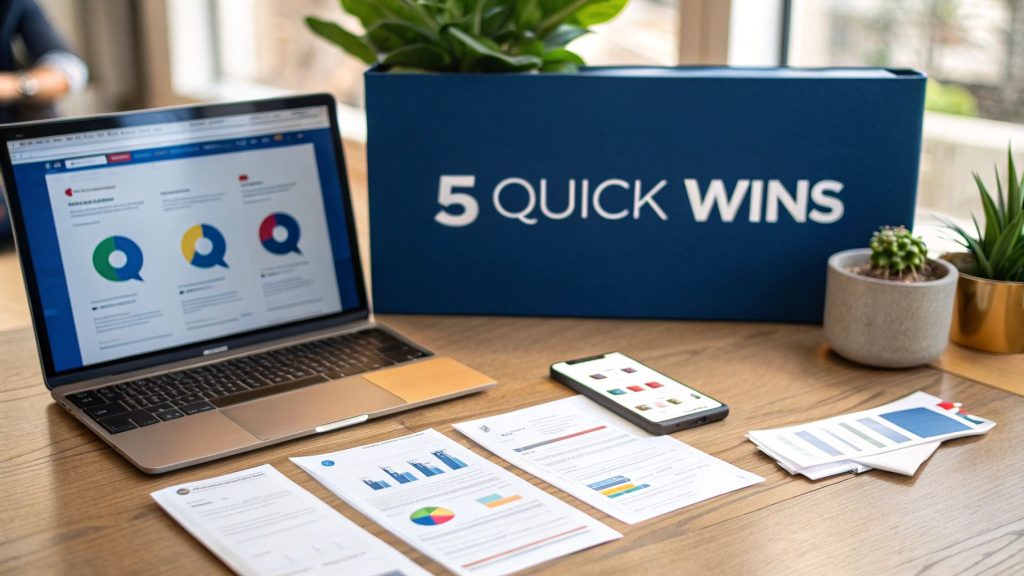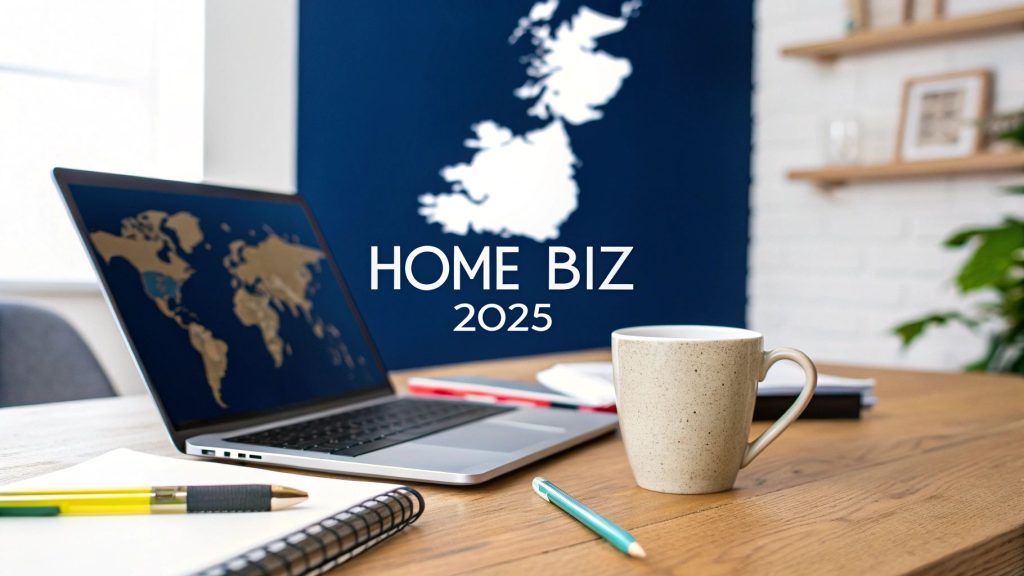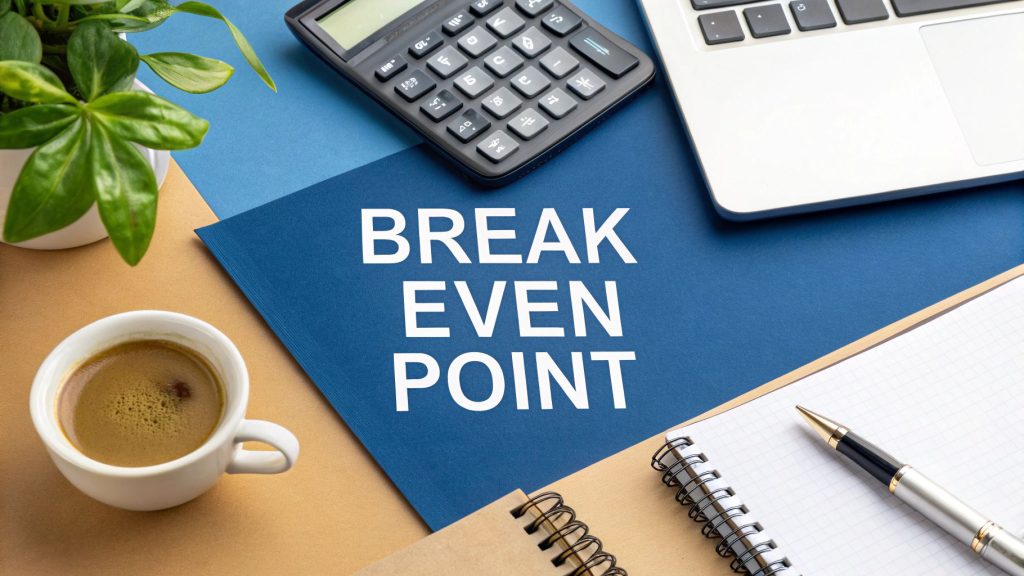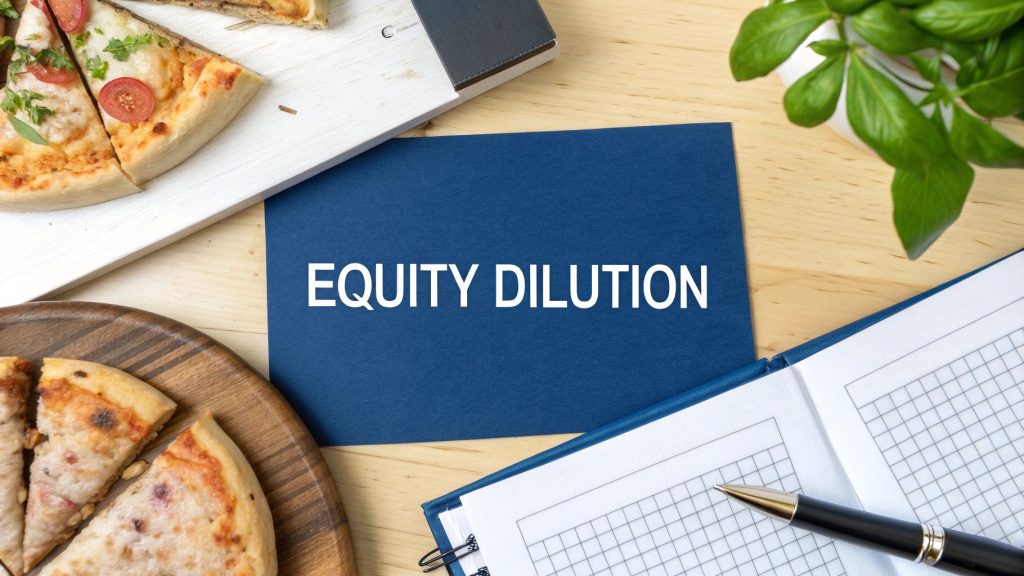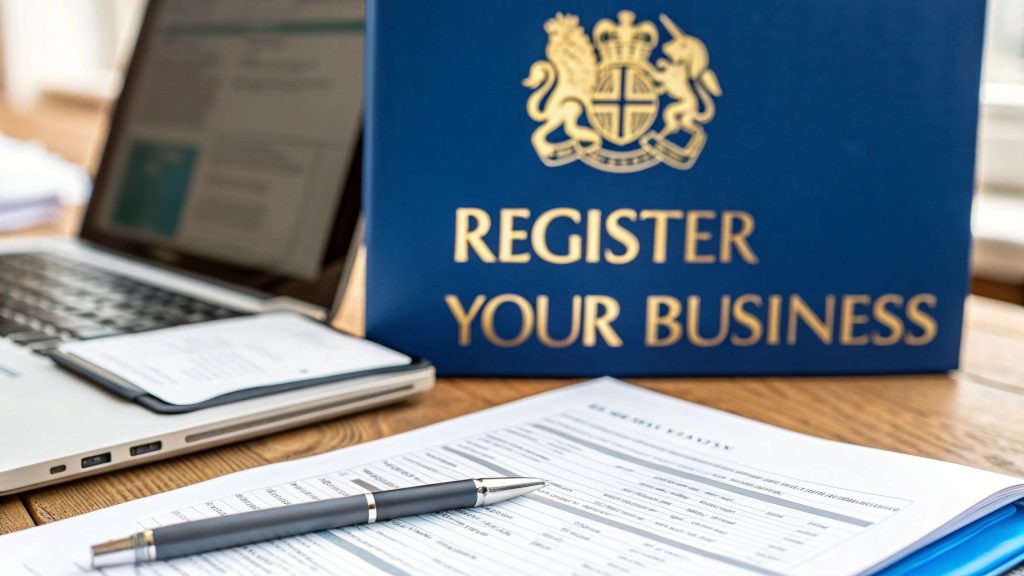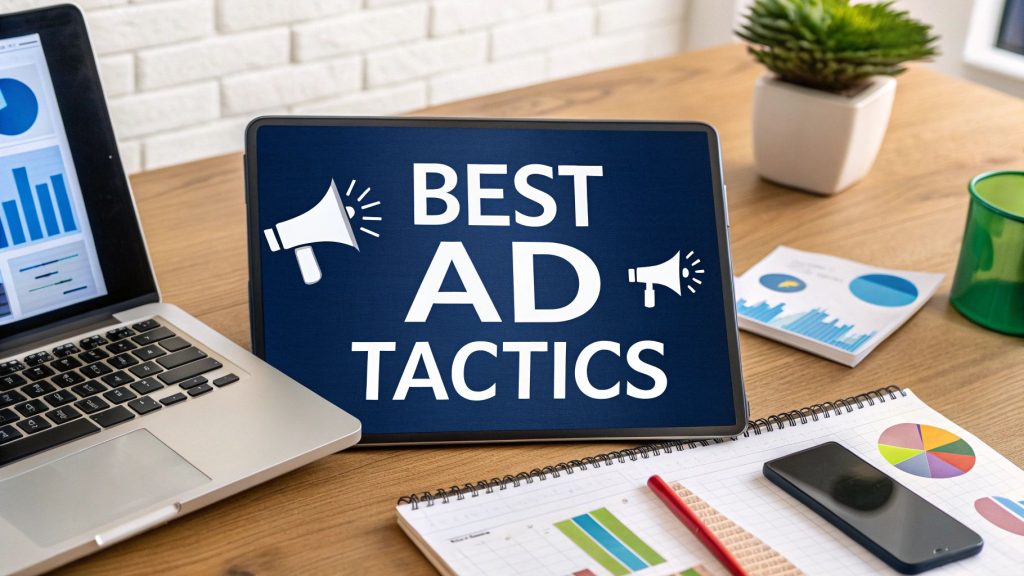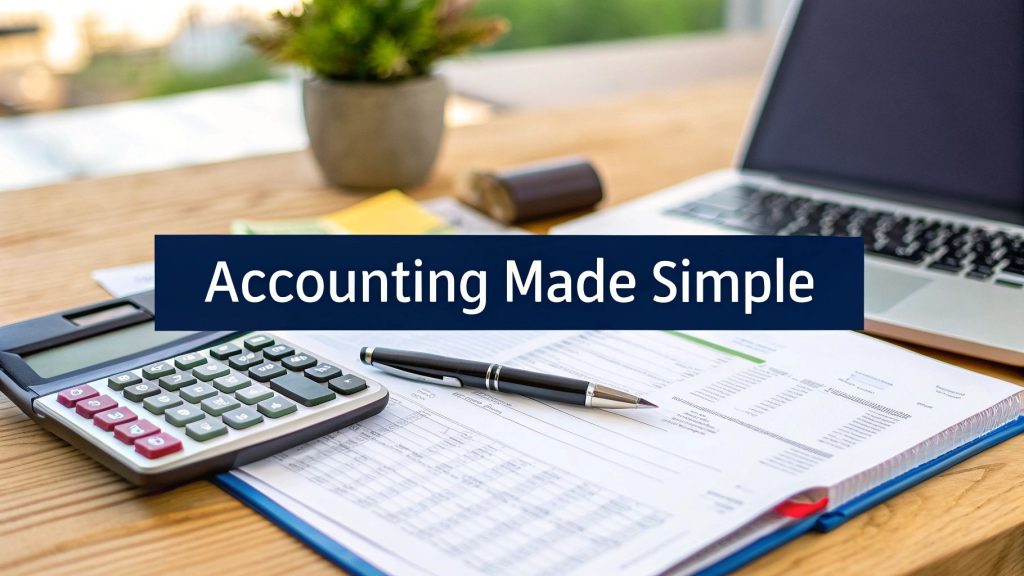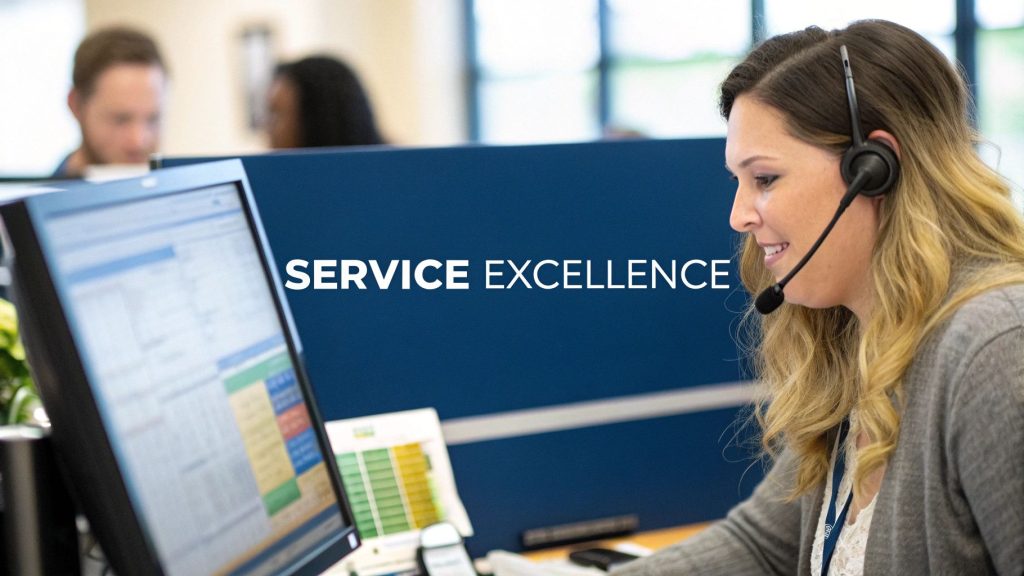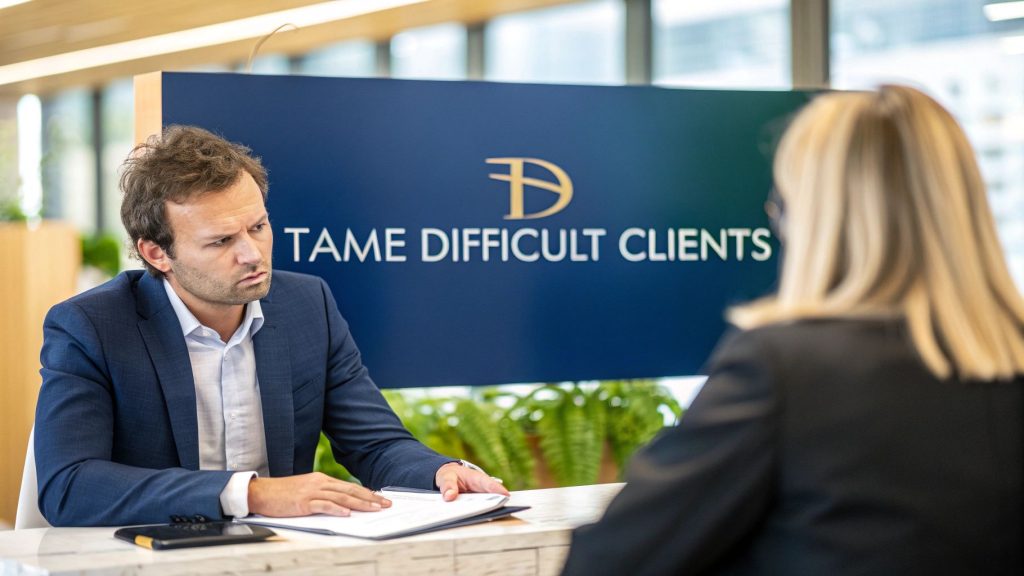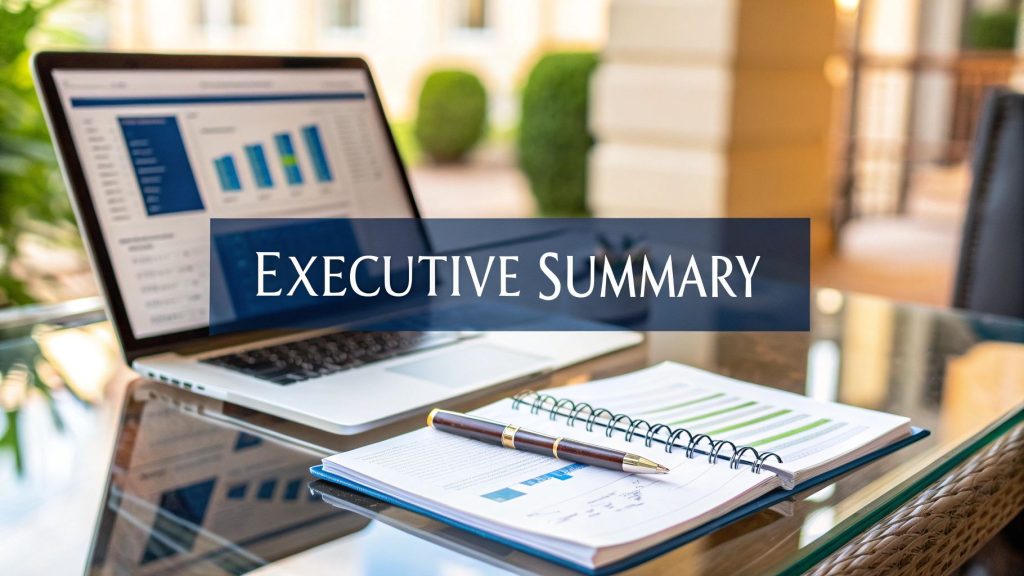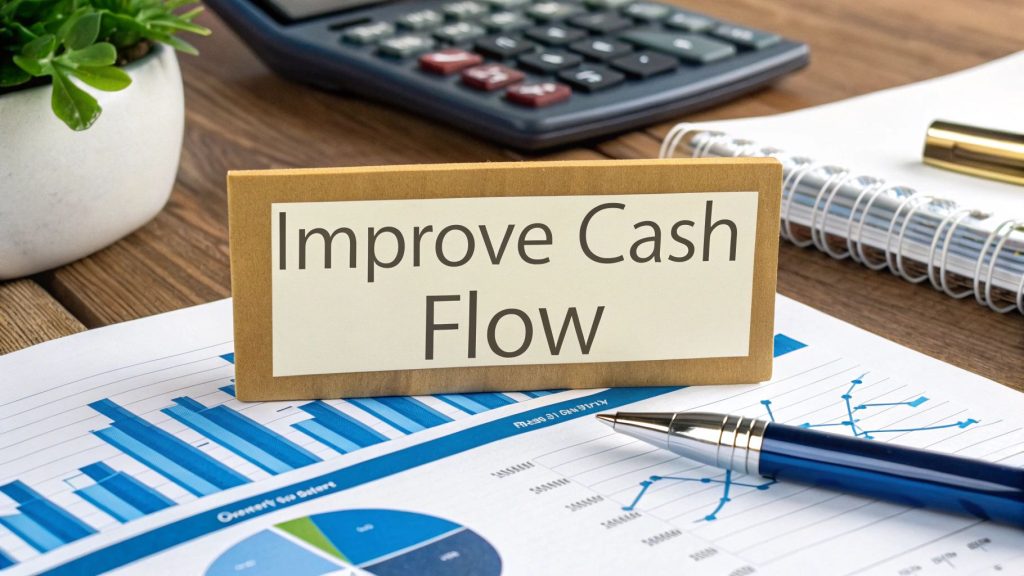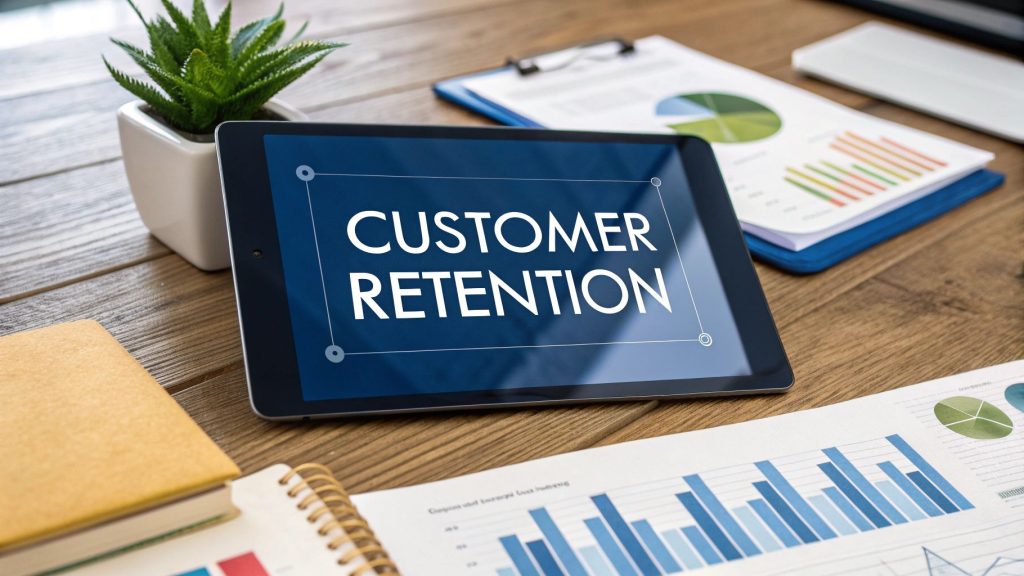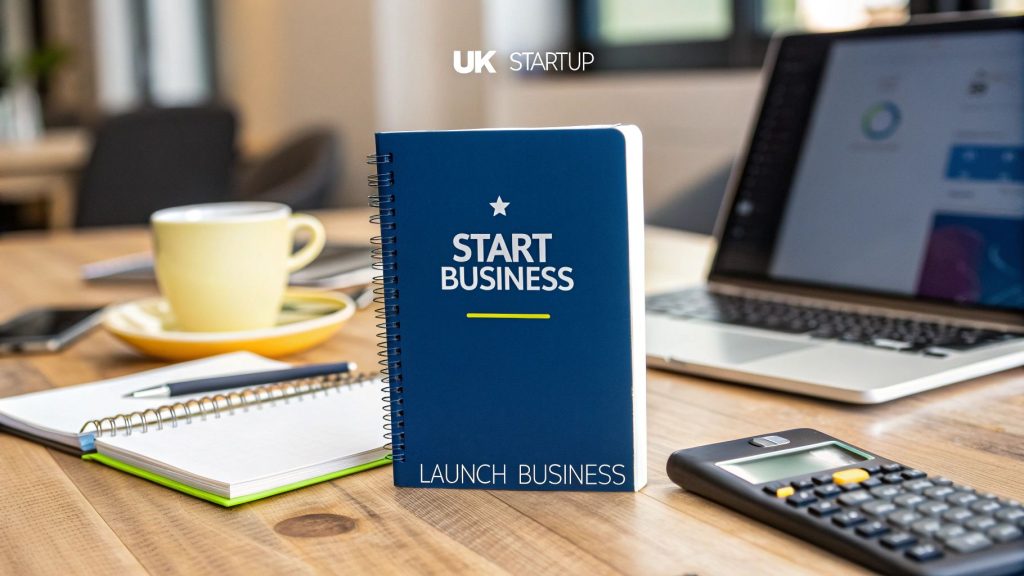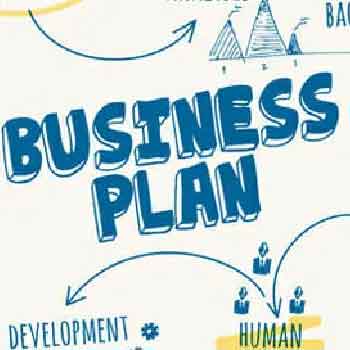Your Guide to a Business Risk Management Framework
Business Risk Management – A business risk management framework is the structured system of policies, processes, and tools your organisation uses to identify, assess, manage, and monitor its risks. Think of it as the architectural blueprint for your company’s resilience—it’s the plan that guides how you protect value and grab opportunities in a world full of uncertainty. For example, for a retail company, this framework isn’t just a document; it’s the plan that dictates how they handle everything from a key supplier going out of business to a sudden shift in consumer spending habits.
Why Your Business Needs a Risk Management Blueprint
In today’s unpredictable environment, running a business without a clear plan for risk is like trying to navigate a ship through a storm without a compass. A business risk management framework gives you that essential guidance. It’s a formal, proactive approach that shifts your organisation from constantly reacting to crises to anticipating and preparing for them.
This structured system isn’t just about dodging bullets; it’s a strategic tool that leads to smarter decisions and sustainable growth. When you systematically understand your potential threats—from market swings to operational hiccups—you can make more informed choices, put resources where they matter most, and build a much stronger organisation.
The infographic below shows how a risk framework acts as the foundation for both stability and smart strategic planning.

As you can see, a well-defined framework isn’t some separate, box-ticking activity. It’s woven directly into the core of your business strategy.
From Reactive Firefighting to Proactive Strategy
Without a framework, “risk management” often just means a series of panicked, disconnected reactions. For example, a small retail business might only think about cybersecurity after a data breach happens, forcing them to deal with costly fines, a damaged reputation, and shattered customer trust.
A proper risk management framework flips that script completely. It forces the business to proactively ask critical questions, such as:
- What are our most important digital assets? Practical example: For a local restaurant, this could be their customer email list and online booking system.
- What is the real likelihood of a cyber attack? Practical example: A phishing email targeting their finance team could be highly likely.
- How would an attack like that actually impact our operations and finances? Practical example: If the booking system goes down on a Friday night, it could cost thousands in lost revenue and damage their local reputation.
An effective framework transforms risk from an unforeseen disaster into a calculated variable. It empowers leaders to properly understand the potential downsides of any strategic move and weigh them against the rewards, paving the way for more confident and ambitious growth.
Navigating Today’s Complex Risk Landscape
The sheer range of threats facing businesses today is wider and more complex than ever before. The UK Business Risk Report from Marsh consistently flags just how diverse these challenges are, with financial uncertainty and cybercrime ranking as top worries for UK businesses. But issues like talent retention and supply chain disruption also feature heavily, showing why you need a comprehensive strategy that tackles both internal weaknesses and external pressures. You can explore more of these trends and insights on marsh.com.
This growing complexity is precisely what makes a structured framework not just a “nice-to-have,” but an absolute necessity for survival and success.
The Core Components of Your Framework
A proper business risk management framework isn’t just a single document you create and forget about. It’s a living, breathing system made up of several interconnected parts. Each piece has a crucial job to do, and they all work together to create a powerful shield against threats while also helping you spot and grab opportunities.
Think of it like building a house. You wouldn’t just throw up some walls and hope for the best. You need a solid foundation, a sturdy frame, and a protective roof. Leave one out, and the whole structure is compromised. Your risk framework is no different; it needs all its essential components to function properly.

Let’s break down the five core components that form the backbone of any successful risk management process.
Step 1: Risk Identification
It’s simple: you can’t manage a risk you don’t know exists. The first and most critical step is Risk Identification—the process of actively finding, recognising, and describing the risks that could throw your business objectives off course. This is your chance to proactively hunt for potential problems before they have a chance to materialise.
There are several great techniques to help uncover these hidden threats. Brainstorming sessions with your team are fantastic for bringing diverse perspectives to the table, often revealing operational risks that senior leadership might have missed. For example, a workshop with warehouse staff might identify the risk of injury from poorly stacked inventory, something an executive might overlook. Another powerful tool is a SWOT analysis, which helps you systematically identify internal weaknesses and external threats.
To get started with this foundational step, you can download a free SWOT analysis template to guide your team’s discussion and ensure you cover all your bases.
Step 2: Risk Analysis
Once you have a list of potential risks, it’s time for Risk Analysis. This is where you get your hands dirty and dig deeper to understand the true nature of each risk. The goal here is twofold: determine the likelihood of a risk happening and the potential impact it would have on your business if it did.
This isn’t about guesswork; it’s about making an educated assessment. For instance, a small e-commerce business might identify “supplier failure” as a risk.
- Likelihood: If they rely on a single supplier in a politically unstable region, the likelihood is high.
- Impact: If that supplier provides 80% of their best-selling product, the impact would be severe, hitting revenue and customer loyalty hard.
This analysis is all about prioritisation. It helps you focus your limited time and resources on the threats that pose the greatest danger to your operations.
Step 3: Risk Mitigation and Response
After analysing your risks, it’s time to decide what you’re going to do about them. This is Risk Mitigation, the process of developing actions and plans to lessen the threats to your goals. This is where your framework turns from a document into a hands-on, actionable plan.
There are four main strategies for responding to a risk, often referred to as the “Four Ts.”
Choosing the right response strategy is a crucial strategic decision. It requires balancing the cost of the fix against the potential cost of the risk itself, ensuring your response is both effective and proportionate.
The table below breaks down each strategy with a practical example, helping you see how to apply them in a real-world business context.
The Four T’s of Risk Response Strategies
| Strategy | Description | Business Example |
|---|---|---|
| Treat | Implement controls or processes to reduce the likelihood or impact of the risk. | A software company invests in advanced cybersecurity software and regular staff training to reduce the threat of a data breach. |
| Tolerate | Consciously accept the risk without taking action, usually because the impact is minor or the cost to treat it is too high. | A small café accepts the minor risk of a coffee machine breaking down, knowing a repair technician is available locally. |
| Transfer | Shift the financial impact of the risk to a third party. | A construction firm takes out public liability insurance to transfer the financial risk of an accident occurring on their site. |
| Terminate | Eliminate the risk entirely by ceasing the activity that causes it. | A business decides to stop offering a high-risk, low-profit service to avoid potential legal complications. |
Choosing the right approach from the “Four Ts” depends entirely on your business, your resources, and your appetite for risk.
Step 4: Monitoring and Review
Risk isn’t a “set it and forget it” kind of problem. Market conditions change, new technologies emerge, and your own internal processes evolve. That’s why Monitoring and Review is such a critical, ongoing part of your framework. It ensures your risk management efforts stay relevant and effective over time.
This means regularly checking in on your identified risks, assessing how well your mitigation strategies are performing, and scanning the horizon for new threats. For instance, a quarterly review might reveal that a previously low-level risk has become more significant due to a change in regulations, forcing you to develop a new response plan. A practical example: A logistics company might monitor fuel prices weekly. If prices spike unexpectedly, they might need to activate a plan to add a temporary fuel surcharge to their client invoices.
Step 5: Communication and Reporting
Finally, great Communication makes sure everyone in the organisation understands their role in managing risk. From the boardroom to the front line, clear and consistent messaging helps build a culture where people are naturally risk-aware. A solid framework needs clear processes for reporting risks and mitigation progress to the right people.
For example, a simple monthly email from the leadership team highlighting a key risk and the steps being taken to manage it can be incredibly effective. This creates a vital feedback loop, enabling continuous improvement and ensuring that risk management is woven into the company’s daily operations, not just something confined to an annual report.
Choosing the Right Risk Management Model
Building a business risk management framework doesn’t mean starting from a blank page. Thankfully, several globally recognised models offer a proven foundation, packed with structured guidance and best practices.
Think of these models like different architectural styles for a house. While they all result in a protective structure, they have different philosophies, layouts, and areas of focus. Picking the right one is a critical first step that will shape how your organisation sees and handles risk for years to come. The best fit depends on your industry, company size, regulatory environment, and what you’re ultimately trying to achieve.
Let’s break down three of the most influential models to help you figure out which might be the best starting point for your business.
COSO ERM Framework
The COSO Enterprise Risk Management (ERM) Framework is a true heavyweight in the world of corporate governance. It’s designed to weave risk management directly into your company’s strategy and day-to-day performance. This isn’t just about stopping bad things from happening; it frames risk management as a powerful tool for creating and protecting value.
Its core strength is its top-down, strategic focus. COSO is particularly well-suited for larger organisations or public companies that need to show they have robust internal controls and can connect risk management to high-level business goals. It helps leaders answer the crucial question: “How much risk are we willing to take on to achieve our strategic goals?”
The Committee of Sponsoring Organisations of the Treadway Commission (COSO) model is widely adopted in the UK, especially by public companies needing to ensure compliance. The framework is built on five interrelated components: Governance & Culture; Strategy & Objective-Setting; Performance; Review & Revision; and Information, Communication, & Reporting, positioning risk as a driver of performance. Discover more insights about UK risk framework examples on pocketbox.co.uk.
This structured, comprehensive approach makes COSO an excellent choice for businesses in highly regulated sectors like finance or healthcare, where compliance is non-negotiable.
ISO 31000 Standard
Where COSO is quite prescriptive, the ISO 31000 standard offers a much more flexible, principles-based approach. It provides guidelines rather than a rigid set of rules, making it adaptable to organisations of any size, industry, or sector. You can think of it as a universal toolkit that you can tailor to your specific needs.
ISO 31000 is built on a set of key principles, a framework, and a process. Its philosophy is simple: risk management should be part of everything you do, from the boardroom to the shop floor. It’s less about ticking compliance boxes and more about creating a risk-aware culture that is always looking to improve.
Here’s how its flexibility plays out in the real world:
- A tech startup could use ISO 31000 to build a lightweight, agile risk process that grows with the company.
- A non-profit organisation might adapt its principles to manage risks related to funding, reputation, and volunteer management.
- A manufacturing SME could apply the framework to identify and manage operational and supply chain risks without the overhead of a more complex system.
Because it isn’t a certifiable standard, its real value comes from putting its guidance into practice to improve how your business runs. This makes it a highly practical choice for many businesses.
NIST Risk Management Framework
For any organisation where technology and data are the lifeblood of the operation, the NIST Risk Management Framework (RMF) is essential. Developed by the U.S. National Institute of Standards and Technology, it has a laser focus on cybersecurity and information security risks.
The NIST RMF provides a detailed, methodical process for managing security and privacy risks tied to your IT systems. It’s a cyclical, seven-step process: Prepare, Categorise, Select, Implement, Assess, Authorise, and Monitor. While it started life in U.S. federal agencies, its thoroughness has made it a gold standard for private companies worldwide that want a rock-solid cybersecurity posture.
This model is the obvious choice for:
- Fintech companies handling sensitive customer financial data.
- E-commerce businesses protecting payment information and personal details.
- Any organisation that sees a data breach or system failure as a major existential threat.
While it is highly specialised, its principles can be neatly integrated into a broader framework like COSO or ISO 31000, ensuring your digital threats get the serious attention they deserve.
How to Build and Implement Your Framework
Turning theory into action is where your business risk management framework truly comes to life. It’s one thing to understand models like COSO or ISO 31000, but the real value is in the execution. Building your framework is a structured journey, transforming abstract principles into concrete, daily practices that genuinely protect and strengthen your business.
This isn’t just another admin task to tick off a list; it’s a strategic project that needs proper planning, dedicated resources, and buy-in from across the entire organisation. Think of it as constructing a bespoke security system for your company. First, you assess the premises, then you install the right equipment, and finally, you train your team to use it effectively.
The following steps offer a practical playbook for taking a robust framework from the drawing board into your day-to-day operations.
Step 1: Secure Leadership Buy-In
Before you can even begin, your framework needs a champion at the top. Securing genuine leadership buy-in isn’t just a nice-to-have; it’s the most critical first step. Without it, you’ll likely find your efforts stalling from a lack of resources, authority, and organisational priority.
To get them on board, you need to present a compelling business case. Don’t just talk about avoiding threats; frame risk management as a strategic enabler. Explain how a clear framework leads to more stable operations, builds investor confidence, and drives better-informed decisions that fuel growth.
Use data to make your point. For instance, you could highlight the average cost of a data breach for a business of your size or the financial fallout from a single supply chain disruption. When you quantify potential losses, the need for proactive management becomes undeniably clear.
Step 2: Assemble a Cross-Functional Team
Risk doesn’t live neatly in one department. A cybersecurity threat involves IT, a financial risk is the accounts team’s domain, and an operational breakdown can impact every single person on the front line. It’s only logical that your implementation team should reflect this diversity.
Pull together a cross-functional group with representatives from key areas of the business, such as:
- Operations: They know the daily processes and potential weak points inside out.
- Finance: Essential for analysing financial risks and the cost-benefit of any fixes.
- IT/Technology: Your go-to for digital security and system vulnerabilities.
- Human Resources: To manage risks related to people, culture, and compliance.
- Legal: To make sure every action aligns with regulatory requirements.
This collaborative approach guarantees a more holistic risk assessment and, just as importantly, fosters a sense of shared ownership from the very beginning.
Step 3: Conduct a Comprehensive Risk Assessment
With your team in place, it’s time for a deep dive. This is where you catalogue the specific threats your business faces and, crucially, prioritise them based on their potential impact and how likely they are to happen.
Your main tool here will be a risk register—a central document that lists every risk you’ve identified. For each entry, you should detail its nature, potential consequences, and an initial score for both likelihood and impact. This process helps create a “heat map,” giving you a clear visual of the most severe risks that need your immediate attention.
A risk register isn’t a one-time document. It’s a dynamic tool that should be continuously updated as new risks emerge and old ones evolve. Regular reviews keep your framework relevant and responsive.
Step 4: Develop and Document Response Plans
Once your risks are prioritised, you need to decide what to do about them. For each significant threat in your register, document a clear risk response plan. This means choosing one of the “Four Ts” (Treat, Tolerate, Transfer, or Terminate) and outlining the specific actions required.
For example, if you identify a high financial risk from poor cash flow management, your plan might be to “Treat” it. The action plan could involve implementing tighter credit control policies and using forecasting tools. You can find a helpful guide and a free cashflow forecast template to better manage and anticipate your financial position.
Writing these plans down is vital. It creates a clear playbook that anyone can follow, ensuring your responses are consistent and effective, especially when a crisis hits.
Step 5: Integrate and Communicate the Framework
A framework is useless if it just sits in a folder on a server. The final, and arguably most important, step is to embed it into your organisation’s culture and daily routines. This means integrating risk management responsibilities into job descriptions and even performance reviews.
Communication is absolutely key here. Run training sessions so every employee understands the framework, their role within it, and exactly how to report a potential risk. A practical example could be setting up a simple, dedicated email address like risks@yourcompany.com where any employee can flag a potential issue they’ve spotted. The goal is to create a risk-aware culture where everyone, from the CEO to the newest hire, feels empowered to act as the eyes and ears of the organisation.
Finally, set a clear schedule for monitoring and reviewing the framework. A quarterly review is a great place to start. This ensures your business risk management framework remains a living, effective system that adapts to the ever-changing landscape of threats and opportunities.
Seeing Risk Management in Action
All the theory is great, but seeing a business risk management framework in the wild is what really makes the concept click. These frameworks aren’t just stuffy corporate documents for FTSE 100 companies; businesses of every size use them to get a grip on uncertainty and protect what they’ve built.
By walking through a few tangible, real-world scenarios, we can see exactly how the process works – from spotting a threat on the horizon to putting a smart solution in place.
Let’s look at how three very different businesses apply these principles to solve distinct, yet common, challenges.

A Manufacturing Firm Tackles Supply Chain Disruption
Imagine a mid-sized UK manufacturer that makes specialist electronic components. Their whole operation hinges on a critical microchip that comes from a single supplier in Asia. During a routine risk assessment, the leadership team flagged this as a massive operational weak spot. A natural disaster, a factory fire, or even a political spat could stop their entire production line cold for months.
They decided to tackle this head-on with a classic “Treat” strategy:
- Risk Identification: Single-source dependency for a key component. Simple, but deadly.
- Risk Analysis: The team figured the chance of something happening was medium, but the fallout would be catastrophic – threatening 60% of their annual revenue.
- Mitigation Strategy: The answer was to diversify. They invested the time and resources to find, vet, and bring on board two new suppliers—one in Eastern Europe and another right here in the UK.
- Monitoring: Now, they review their supplier risk profile every quarter, making sure no single provider ever accounts for more than 50% of any critical part.
Yes, this proactive move cost a bit more upfront, but it built a crucial safety net that insulated them from future shocks.
A Fintech Startup Mitigates Cybersecurity Threats
Now picture a fast-growing fintech startup. They handle incredibly sensitive customer financial data, which makes cybersecurity their number one risk. A data breach wouldn’t just mean eye-watering regulatory fines; it would instantly vaporise the customer trust their entire brand is built on.
For businesses in the digital space, reputation is an asset as valuable as cash. A robust risk framework is the primary tool for protecting that trust by demonstrating a serious commitment to security.
Their framework is all about multi-layered defence:
- Identification: The team zeroed in on two main threats: unauthorised access to customer accounts and hackers stealing data.
- Response: They went with a “Treat” strategy, rolling out mandatory multi-factor authentication (MFA) for all user accounts. On top of that, they invested in a security monitoring service that actively scans for dodgy activity 24/7.
- Communication: They also launched regular, mandatory security training for all staff, teaching them how to spot phishing emails and other sneaky social engineering tricks.
By embedding these controls, the startup didn’t just tick a compliance box. It built a more secure platform, turning a potential weakness into a genuine competitive advantage.
A Retail Business Weathers an Economic Downturn
Finally, let’s consider a chain of high-street clothing boutiques. Their big worry? An economic downturn causing a sharp drop in consumer spending. Their analysis showed this would hammer their cash flow and could even force them to start closing stores.
Here, they opted for a savvy mix of “Treat” and “Tolerate” strategies. They treated the risk by adding more affordable, essential items to their product lines alongside their usual premium collections. They also beefed up their e-commerce site to capture more online sales, making them less dependent on footfall.
At the same time, they tolerated the risk of losing some high-end customers, shifting their focus to maintaining overall sales volume and staying stable. This flexible approach helped them ride out the storm and adapt to a changing market.
Common Challenges and Best Practices
So, you’ve designed a brilliant risk management framework on paper. The theory is solid, the plan is detailed… but putting it into practice is where things often get tricky. Even the most carefully crafted models can hit roadblocks that weaken their impact. Getting ahead of these hurdles is the first step towards building a business that’s genuinely resilient.
One of the biggest obstacles is simply getting your team on board. People often see risk management as just another layer of red tape designed to slow them down. This can lead to a “tick-box” culture, where staff follow the process but don’t actually engage with the why. At the same time, finding the money and dedicating the right people to the job is a constant struggle, especially for smaller businesses.
Fostering a Strong Risk-Aware Culture
The best frameworks aren’t just documents; they’re living parts of the company culture. Success comes from embedding risk awareness into the company’s DNA, making everyone feel a sense of ownership over it.
A proactive risk culture shifts responsibility from a single department to the entire organisation. It creates an environment where people feel empowered to flag potential issues without fear of blame, turning every employee into a guardian of the business’s health.
For this to take hold, leadership needs to walk the walk. It doesn’t have to be complicated. A manager could kick off team meetings with a quick, five-minute chat about new risks or challenges on the horizon for their projects. Simple habits like this make talking about risk a normal part of the day-to-day.
Best Practices for a Resilient Framework
Beyond building the right mindset, a few practical steps can elevate your framework from a static document into a dynamic, strategic tool. These practices ensure your efforts stay effective, adaptable, and tied directly to your business goals.
- Bring in the Right Tech: Modern risk management software can be a game-changer. It automates monitoring, crunches data in real-time, and gives you a single, clear view of your entire risk landscape. This makes your processes far more efficient and your insights much sharper.
- Stay Agile: Your framework can’t be a “set it and forget it” exercise. The world changes, and so do the risks. You have to regularly review and update your assessments—especially when the market shifts, new rules come in, or your own business evolves.
- Weave it into Your Strategy: Don’t treat risk management like a separate, siloed task. It should be woven into the very fabric of your strategic planning. This helps you make smarter decisions about everything from launching a new product to entering a new market.
Regulators are increasingly focused on this. The UK’s Financial Conduct Authority (FCA), for example, recently highlighted that many payment firms have underdeveloped risk management systems, particularly when it comes to enterprise-wide threats. You can read more about these FCA findings on improving financial resilience. Properly embedding these best practices, like clarifying responsibilities in contracts, is essential. On that note, you might find our guide on how to protect your business with contracts and agreements useful.
Got Questions? Let’s Get Them Answered
Diving into a new system always sparks a few questions. It’s only natural. So, let’s clear up some of the most common queries people have when putting a business risk management framework in place.
How Often Should We Be Reviewing Our Framework?
Think of your framework as a living, breathing part of your business, not a document you write once and file away. It needs to adapt as you do.
A full, top-to-bottom review should happen at least annually. But you’ll also want to revisit it anytime there’s a major shift—like a new business strategy, a sudden change in the market, or new regulations landing on your desk.
What’s the Difference Between a Framework and a Risk Register?
This is a great question, and it’s easy to get them mixed up. The simplest way to think about it is like this: the framework is your entire filing cabinet. It’s the whole system—the structure, the rules, and the processes you’ve decided on for managing risk.
The risk register, on the other hand, is just one of the files inside that cabinet. It’s a specific document or tool where you list, analyse, and keep track of individual risks.
The framework gives you the how and why of managing risk. The risk register gives you the what. You can’t really have one working effectively without the other.
Can a Small Business Actually Do This Without a Dedicated Risk Manager?
Absolutely. In fact, most small businesses do. For a smaller company, risk management is usually a shared hat worn by the owner or the leadership team.
The secret is to keep your framework simple and practical. Don’t overcomplicate it. You don’t need fancy software or a whole department to start spotting your biggest threats and figuring out how to handle them. Just focus on what’s most critical to your operations.
At Grow My Acorn, we provide the essential information and advice your business needs to thrive. Explore our resources to build a more resilient and successful future at https://growmyacorn.co.uk.


